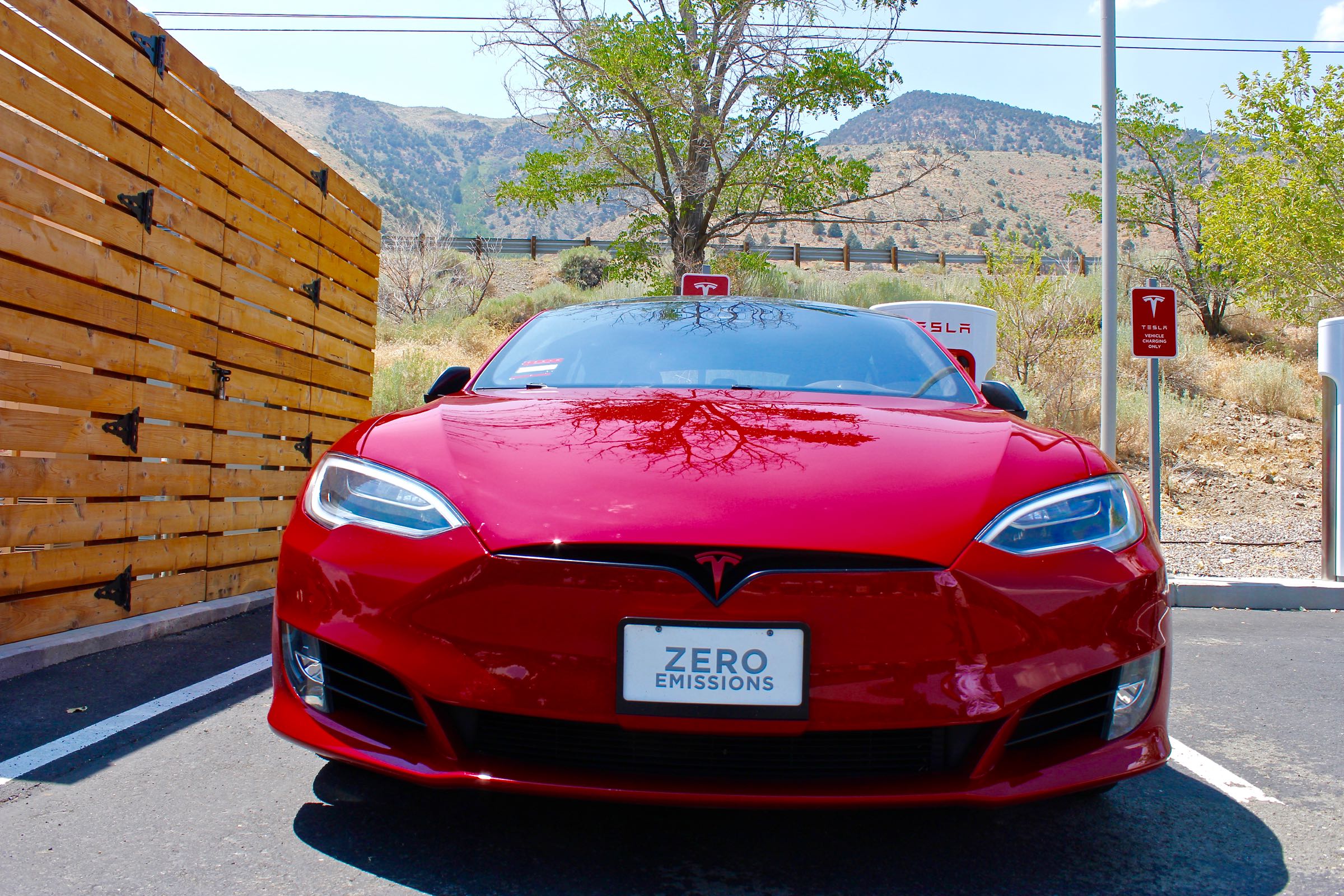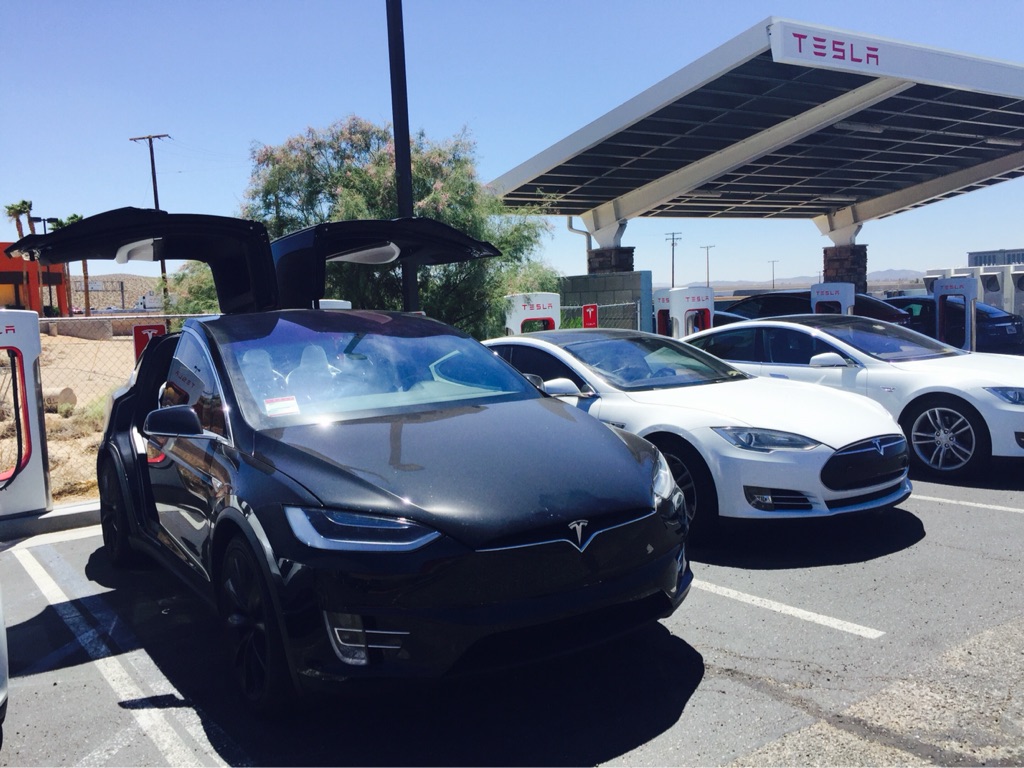Lifestyle
Why does a Tesla have such high resale value?

If you buy an electric car that isn’t a Tesla, chances are you will take an enormous hit when it comes time to trade it in. According to Black Book, a 2013 Nissan LEAF is worth just 22% of its original MSRP. A five year old LEAF is worth a dismal 11% of what it cost new. A three year old conventional car is typically worth between 45% and 65% of its original cost.
Keep in mind that all calculations involving electric cars are skewed by the federal tax credit. What buyers paid for their car is often considerably less than MSRP after the credit is figured in. But even with that caveat, that used LEAF is typically worth about 30% of what a buyer paid for it three years ago.
“To be under 20 percent is fairly telling,” said Anil Goyal, Black Book’s senior vice-president of operations. “A lot of it has to do with demand.” Demand for used electric cars is suppressed by a number of factors. First is range. An early Nissan LEAF can only drive about 60 miles before range anxiety kicks in. The same is true of most other electric “compliance cars” like the Mitsubishi i-MiEV, Volkswagen e-Golf and Fiat 500e.
Another factor is the pace of improvements. When the personal computer first hit the market, upgrades happened so rapidly that the machine you bought in the morning was often obsolete by the time you got it home. Battery range has increased significantly in recent years. Black Book’s Goyal says used car buyers are just not that interested in a car that has less than 100 miles of range. The BMW i3 is included in that group.
A three year old Tesla Model S is worth 62% of its original value
Another factor is the chaotic nature of EV charging networks. Competing standards, lack of consumer information, and a welter of confusing charging plans cause anxiety for EV drivers. Which brings us to Tesla. A three year old Tesla Model S is worth 62% of its original value according to Black Book.
Why? Several factors. First, over the air updates eliminate most of the fear that the car will be out of date in a year or two. Second, the Supercharger network assures Tesla owners that when they need to replenish their batteries while away from home, a free fast charging facility is nearby.

Tesla continues to aggressively expand its fast-charging Supercharger network across the world
A third factor is styling. Most manufacturers decided to give their first electric cars “Hey, look at me!” lines. But mainstream buyers want mainstream styling. The Tesla looks Model S and Model X look like the premium luxury cars they are. The forthcoming Model 3 has a pleasing, modern design that will make it stand out from other sedans without the weirdness of the BMW i3. Chevrolet tried making the original Volt look different, but decided to make the second generation more conventional in appearance. It’s hard to tell a new Volt from a new Chevy Cruze.
A number of car companies are planning to offer battery electric vehicles in the next 3 to 5 years. How will they fare in the used car market after the new wears off and they have tens of thousands of miles on them? That’s purely speculative at this point, but unless they have the build quality and reliability people expect, over the air updates to keep then current with technological changes, and the comprehensive charging networks needed to eliminate any hint of range anxiety, they are unlikely to retain their original value as well as a Tesla.
While everyone else is whining about how hard it is to sell electric cars and hedging their bets by building cars that can be powered by gasoline, diesel, plug-in powertrains, batteries, fuel cells, and pixie dust, Tesla is just going out and doing what needs to be done to make the electric car revolution a reality.
The numbers don’t lie. When it comes to selling electric cars that people want and that continue to hold their value as the years and miles go by, only one company done it successfully — Tesla. Everyone else is so far behind that by the time they catch up to where Tesla is today, Elon will be sending the first astronauts on their way to Mars.

Lifestyle
Tesla Model S Plaid battles China’s 1500 hp monster Nurburgring monster, with surprising results
There is just something about Tesla’s tuning and refinement that makes raw specs seem not as game-changing.

The Tesla Model S Plaid has been around for some time. Today, it is no longer the world’s quickest four-door electric sedan, nor is it the most powerful. As per a recent video from motoring YouTube channel Carwow, however, it seems like the Model S Plaid is still more than a match for some of its newer and more powerful rivals.
The monster from China
The Xiaomi SU7 Ultra is nothing short of a monster. Just like the Model S Plaid, it features three motors. It also has 1,548 hp and 1,770 Nm of torque. It’s All Wheel Drive and weighs a hefty 2,360 kg. The vehicle, which costs just about the equivalent of £55,000, has been recorded setting an insane 7:04.957 at the Nurburgring, surpassing the previous record held by the Porsche Taycan Turbo GT.
For all intents and purposes, the Model S Plaid looked outgunned in Carwow’s test. The Model S Plaid is no slouch with its three motors that produce 1,020 hp and 1,420 Nm of torque. It’s also a bit lighter at 2,190 kg despite its larger size. However, as the Carwow host pointed out, the Model S Plaid holds a 7:25.231 record in the Nurburgring. Compared to the Xiaomi SU7 Ultra’s record, the Model S Plaid’s lap time is notably slower.
Real-world tests
As could be seen in Carwow’s drag races, however, Tesla’s tech wizardry with the Model S Plaid is still hard to beat. The two vehicles competed in nine races, and the older Model S Plaid actually beat its newer, more powerful counterpart from China several times. At one point in the race, the Xiaomi SU7 Ultra hit its power limit due to its battery’s temperature, but the Model S Plaid was still going strong.
The Model S Plaid was first teased five years ago, in September 2020 during Tesla’s Battery Day. Since then, cars like the Lucid Air Sapphire and the Xiaomi SU7 Ultra have been released, surpassing its specs. But just like the Model Y ended up being the better all-rounder compared to the BYD Sealion 7 and the MG IM6, there is just something about Tesla’s tuning and refinement that makes raw specs seem not as game-changing.
Check out Carwow’s Model S Plaid vs Xiaomi SU7 drag race video below.
Lifestyle
500-mile test proves why Tesla Model Y still humiliates rivals in Europe
On paper, the BYD Sealion 7 and MG IM6 promised standout capabilities against the Model Y.

BYD is seeing a lot of momentum in Europe, so much so that mainstream media has taken every opportunity to argue that the Chinese automaker has beaten Tesla in the region. But while BYD sales this year in Europe are rising and Tesla’s registrations remain challenged, the raw capabilities of vehicles like the Model Y are difficult to deny.
This was highlighted in a 500-mile challenge by What Car? magazine, which showed that the new Tesla Model Y is more efficient, cheaper to run, and more reliable than rivals like the BYD Sealion 7, and even the nearly 400 KW-charging MG IM6.
Range and charging promises
On paper, the BYD Sealion 7 and MG IM6 promised standout capabilities against the Model Y. The Sealion 7 had more estimated range and the IM6 promised significantly faster charging. When faced with real-world conditions, however, it was still the Model Y that proved superior.
During the 500-mile test, the BYD nearly failed to reach a charging stop, arriving with less range than its display projected, as noted in a CarUp report. MG fared better, but its charging speeds never reached its promised nearly-400 kW charging speed. Tesla’s Model Y, by comparison, managed energy calculations precisely and arrived at each stop without issue.
Tesla leads in areas that matter
Charging times from 25% to 80% showed that the MG was the fastest at 17 minutes, while Tesla and BYD were close at 28 and 29 minutes, respectively. Overall efficiency and cost told a different story, however. The Model Y consumed 19.4 kWh per 100 km, compared to 22.2 for MG and 23.9 for BYD. Over the full trip, Tesla’s charging costs totaled just £82 thanks to its supercharger network, far below BYD’s £130 and MG’s £119.
What Car? Magazine’s testers concluded that despite BYD’s rapid sales growth and the MG IM6’s seriously impressive charging speeds, Tesla remains the more compelling real-world choice. The Model Y just offers stability, efficiency, and a proven charging infrastructure through its Supercharging network. And as per the magazine’s hosts, the Model Y is even the cheapest car to own among the three that were tested.
Watch What Car? Magazine’s 500-mile test in the video below.
Lifestyle
Tesla Cybertruck slapped with world’s least intimidating ticket, and it’s pure cringe
One cannot help but cringe and feel second-hand embarrassment at the idea of a person just driving around with a stack of these babies.

A Cybertruck parked at Stanford Shopping Center in California was recently hit with what might be the most try-hard piece of paper ever slipped under a wiper blade: a “fake citation” accusing the driver of supporting a “fascist car.”
The note, shared on X by Tesla staff program manager Ryan Torres, quickly made the rounds on X, where it quickly gained attention as an example of how not to protest.
The world’s least intimidating ticket
According to the citation, the supposed “violation” was “driving a fascist car.” The remedial action? Take the bus, call an Uber, or ride a bike. The note also dubbed Elon Musk a “chainsaw-wielding Nazi billionaire.” Now, protests against Tesla and Elon Musk have become commonplace this year, but one cannot help but cringe and feel second-hand embarrassment at the idea of a person just driving around with a stack of fake anti-Tesla/Musk citations.
Torres pointed out the irony himself in his post on X. Tesla currently employs over 140,000 Americans, and SpaceX has put the U.S. firmly back at the top of space technology. As Torres put it, maybe the person behind the world’s least intimidating ticket should “read a book on innovation before vandalizing” other people’s property.
Peak performative clownery
Not to mention that the fake ticket’s logic collapses under its own weight. EVs like the Cybertruck are literally designed to reduce emissions, not “destroy the economy.” If anything, Tesla has bolstered the United States’ economy by fueling jobs in engineering, manufacturing, and clean energy. It’s not the first time a Tesla has been the target of vandalism or politically charged notes, but this one stands out for sheer cringe value.
Torres summed it up neatly: “Peak clownery.” On that point, at least, the citation earns full marks. In a way, though, perhaps cringe fake tickets are not as bad as the literal firebombs that were being thrown at Tesla stores and cars earlier this year because some critics were gleefully misinformed about Elon Musk.








